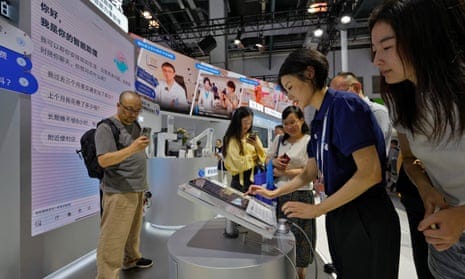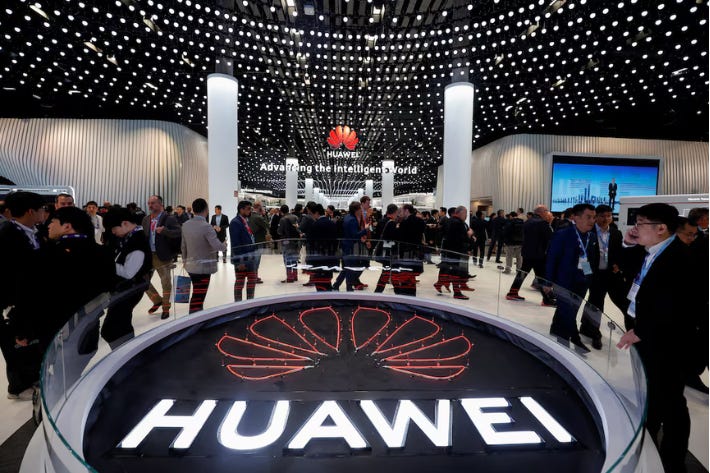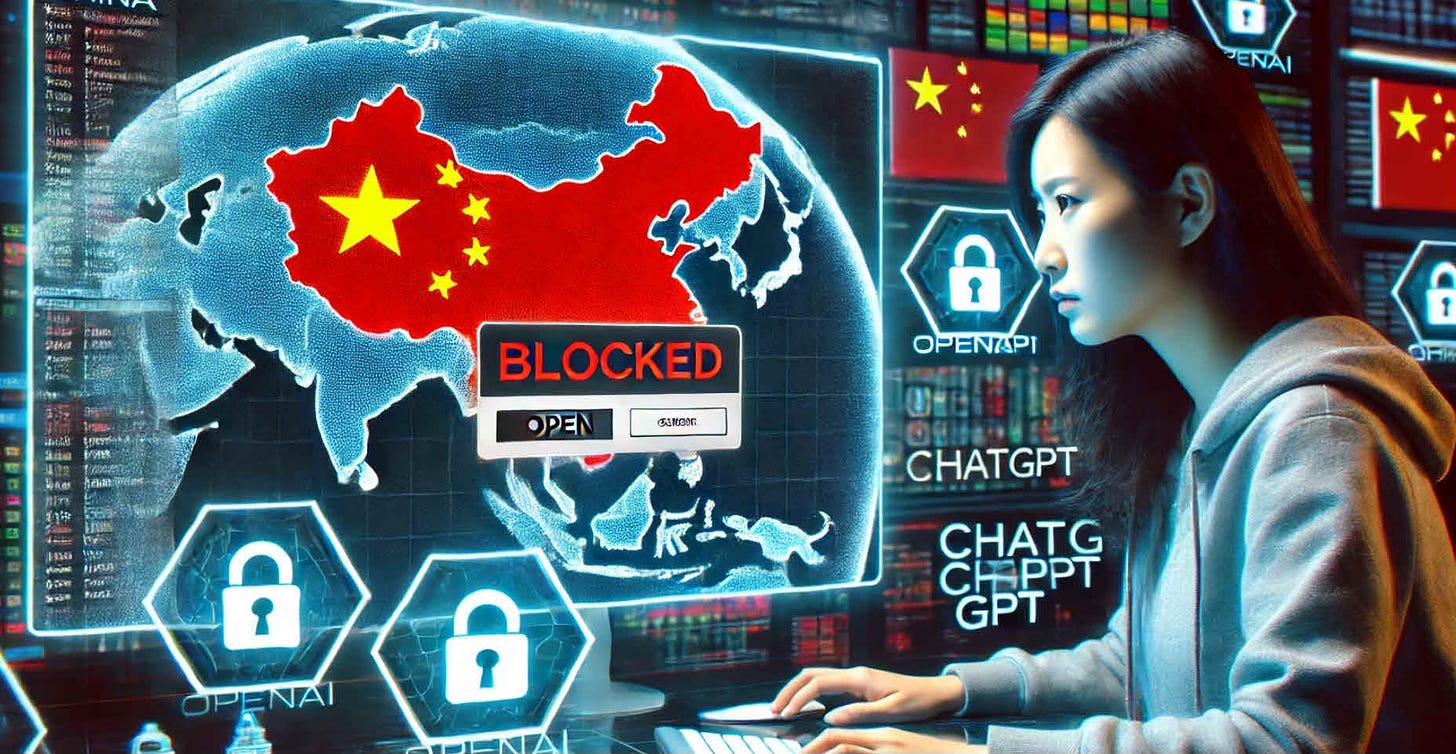Opened and Closed
China poised to dominate the market for legacy chips, OpenAI's closed door boost to local LLM developers, Huawei’s Smart Car Tech Gives Foreign Brands A Way Into China.
Legacy Chips
China is poised to dominate the market for legacy chips, and the U.S. may only have itself to blame
By Lionel Lim
In April, U.S. Commerce Secretary Gina Raimondo took the stage in the Belgian city of Leuven with a warning: “About 60% of all new ‘legacy chips’ coming into the market in the next handful of years will be produced by China,” she told reporters.
The U.S. and its allies are controlling China’s access to advanced chips used to power cutting-edge applications like AI. But much of the industry makes so-called mature chips, less sophisticated products that power household appliances, electric vehicles, and other everyday products.
And China—despite an increasing array of U.S. policies meant to constrain the country’s chip industry—could be set to dominate that market. Chinese chip production jumped 40% in the first quarter, according to government data. Mainland Chinese firms could be major players in the legacy chip market, behind Taiwan-based firms, and account for 33% of the market by 2027, predicts TrendForce, a market research firm.
Western officials in recent months have delivered a steady drumbeat of concerns over Chinese “overcapacity,” alleging that China uses state subsidies to help industries like electric vehicles and solar panels undercut their foreign competition.
But unlike EVs or renewable energy—industries that Beijing and private companies recognized as strategic opportunities early on—analysts suggest that China’s dominance of mature chips is instead a by-product of other policies. And they note U.S. pressure likely (and ironically) played a major role in fostering China’s potential success in legacy chips.
China’s goal is to eventually produce the advanced chips that can power AI or 5G mobile technology. Yet Washington’s export restrictions are stopping Chinese chip manufacturers from getting the tools they need. That means Chinese chip manufacturers are turning to the less advanced chips they can still produce.
“They have to start somewhere,” says Chim Lee, a senior Asia analyst at the Economist Intelligence Unit. “You have to start with the mature nodes ... then scale up the market gradually.”
Why is China investing in legacy chips?
Legacy chips, also referred to as mature chips or mature nodes, are less advanced semiconductors used in a wide array of electronic devices, ranging from household appliances to electric vehicles. U.S. export controls define legacy chips as those larger than the “16- to 14-nanometer” generation. Chips of that size are slightly more than a decade old. By comparison, TSMC, the world’s leading contract chip manufacturer, is set to mass produce two-nanometer chips meant for high-end electronics like Apple’s smartphones or Nvidia’s processors next year.
Read more here.
OpenAI's closed door boosts China LLM developers
By China Daily
Quite a few AI startups in the Chinese mainland, which are "unsupported" by OpenAI, have been developing large language models or AI applications by integrating with the OpenAI API. Those might suffer from Open-AI's blocking of data traffic.
By doing so, OpenAI has actually exited the mainland market and given up the opportunity of training LLMs in the large market, giving domestic LLM companies an opportunity to accelerate their independent R&D and encourage more startups to opt for domestically produced LLMs.
China doesn't lag far behind the US in terms of LLM development. Its developed LLMs account for 36 percent of the global whole compared to the US' 44 percent, according to the Global Digital Economy White Paper 2024 released by the Global Digital Economy Conference on July 2.
And despite the US leading in fundamental model research and development, China holds a strong position in the number of AI patents and the installation of industrial robots. In 2022, China accounted for 61.1 percent of the global AI patents, surpassing the 20.9 percent held by the US. The installation of industrial robots in China reached 290,300 units in 2022, which is 7.4 times the 39,500 units in the US at that time.
From all aspects, the gap between the US and China is not that huge. As startups in China will now have to turn to integrating with domestic LLM developers, there will be huge amounts of linguistic materials for the latter to train their models with. That's how China's advantage of a large, active population with access to the internet will be made use of in speeding up the development of its AI sector.
Read more here.

Chinese developers scramble as OpenAI blocks access in China
US firm’s move, amid Beijing-Washington tensions, sparks rush to lure users to homegrown models
By Amy Hawkins
At the World AI Conference in Shanghai last week, one of China’s leading artificial intelligence companies, SenseTime, unveiled its latest model, SenseNova 5.5. The model showed off its ability to identify and describe a stuffed toy puppy (wearing a SenseTime cap), offered feedback on a drawing of a rabbit, and instantly read and summarised a page of text. According to SenseTime, SenseNova 5.5 is comparable with GPT-4o, the flagship artificial intelligence model of the Microsoft-backed US company OpenAI.
If that wasn’t enough to entice users, SenseTime is also giving away 50m free tokens – digital credits for using the AI – and says that it will deploy staff to help new clients migrate from OpenAI services to SenseTime’s products for free.
Chinese attempts to lure domestic developers away from OpenAI – considered the market leader in generative AI – will now be a lot easier, after OpenAI notified its users in China that they would be blocked from using its tools and services from 9 July.
“We are taking additional steps to block API traffic from regions where we do not support access to OpenAI’s services,” an OpenAI spokesperson told Bloomberg last month.
OpenAI has not elaborated about the reason for its sudden decision. ChatGPT is already blocked in China by the government’s firewall, but until this week developers could use virtual private networks to access OpenAI’s tools in order to fine-tune their own generative AI applications and benchmark their own research. Now the block is coming from the US side.
Rising tensions between Washington and Beijing have prompted the US to restrict the export to China of certain advanced semiconductors that are vital for training the most cutting-edge AI technology, putting pressure on other parts of the AI industry.
The OpenAI move has “caused significant concern within China’s AI community” said Xiaohu Zhu, the founder of the Shanghai-based Centre for Safe AGI, which promotes AI safety, not least because “the decision raises questions about equitable access to AI technologies globally”.
But it has also created an opportunity for domestic AI companies such as SenseTime, which are scrambling to hoover up OpenAI’s rejected users. After warnings about OpenAI’s decision circulated last month, Baidu offered 50m free tokens for its Ernie 3.5 AI model, as well as free migration services, while Zhipu AI, another local company, offered 150m free tokens for its model. Tencent Cloud is giving away 100m free tokens for its AI model to new users until the end of July. “Competitors are offering migration pathways for former OpenAI users, seeing this as an opportunity to expand their user base,” said Zhu.
One consequence of OpenAI’s decision may be that it accelerates the development of Chinese AI companies, which are in tight competition with their US rivals, as well as each other. China is estimated to have at least 130 large language models, accounting for 40% of the world’s total and second only to the US. But while US companies such as OpenAI have been at the cutting edge of generative AI, Chinese companies have been engaged in a price war that some analysts have speculated may harm their profit margins and their ability to innovate. Still, Winston Ma, a professor at New York University who writes about Chinese technology, said OpenAI’s departure from China comes “at a time when Chinese big tech players are closing on performance gap with OpenAI and are offering these Chinese LLM models essentially free”.
“OpenAI’s departure is a short-term shock to the China market, but it may provide a long-term opportunity for Chinese domestic LLM models to be put to the real test,” said Ma. Until now, Chinese companies have focused on the commercialisation of large language models rather than advancing the models themselves, he added.
Chinese commentators have been keen to brush off the impact of OpenAI’s decision. State media outlet the Global Times said it was “a push from the US to hamper China’s technology development”. Pan Helin, a digital economy researcher at Zhejiang University who sits on a government technology committee, described the development as “a good thing for China’s large-scale model independence and self-reliance”, according to Chinese media.
But there are signs that the US restrictions on China’s AI industry are starting to bite. The online video giant Kuaishou recently had to restrict the number of people who could access its new text-to-video AI model, Kling, because of a lack of computing capacity caused by a shortage of chips, according to a report in The Information. And there is now a booming hidden market for US semiconductors, as companies find ways to circumvent the sanctions. Being blocked from US software may inspire similar creativity.
Read more here.
Huawei’s Smart Car Tech Gives Foreign Brands A Way Into China
By Vishakha Saxena
Amid an increasing dominance of local carmakers in China’s crowded car market, Huawei’s newly launched intelligent driving technology is giving foreign brands a new way into the world’s biggest automobile market.
Huawei Technologies has two huge booths at this week’s Beijing Auto Show, and at least seven Chinese automakers are touting its Qiankun installed in their cars as the most sophisticated advanced driving assistance system (ADAS) to date.
“Huawei is currently leading in ADAS technologies,” Feng Xingya, General Manager at Guangzhou Automobile (GAC) told reporters on Thursday.
GAC will launch flagship models under its Trumpchi brand from 2025 featuring Huawei’s smart vehicle technology.

“We chose them because we must make sure GAC products are equipped with the most advanced technologies for consumers,” Feng said.
But the allure of Huawei’s driving tech is not limited to Chinese carmakers alone.
Germany’s Volkswagen will equip its China-made, China-bound Audi Q6L e-tron with Qiankun upon the car’s 2025 launch, two people with knowledge of the matter told Reuters.
That would be Huawei’s first deal with a foreign automaker.
Nissan CEO Makoto Uchida’s interest was piqued too as he visited a Huawei booth and listened to representatives explain the systems developed for the Seres car on display. A Nissan spokesperson said Uchida was touring booths and had no comment on any considerations of a Huawei tie-up.
Separately, three managers at foreign automakers said Huawei is seen as a potential partner worth serious consideration for foreign brands in China despite difficulties with Western governments.
Managers said Huawei’s ability to make its own chips raises its appeal, as decoupling could see further trade restrictions which would otherwise impact China strategies.
Automakers “may end up partnering with Chinese firms to provide driving automation for the vehicles targeting the Chinese markets. Huawei can benefit from such opportunities whereas other ADAS providers, eg, Bosch, may not have them in China in the same way they have them in Europe or the US,” said Evangelos Simoudis, an investor and corporate adviser.
Legacy carmakers’ eye Huawei solutions
Huawei’s rapid emergence as a parts supplier highlights the telecommunications equipment maker’s drive for sources of growth after US sanctions since 2019 hammered its businesses.
It’s taken Huawei just four years to become a force in smart car technology. The carmaker has perviously said it aims to become a top-tier automotive supplier for the intelligent EV era, competing with the likes of Bosch, Denso and Continental.
Aito, the new energy vehicle (NEV) brand backed by Huawei, ranked sixth among new energy brands in China in the January-March quarter.
Huawei’s market entry has been smoothed by the sheer pace of development in China’s EV industry.
Legacy automakers have struggled to keep up with EV manufacturers such as BYD who are packing one-time premium features into cars as cheap as $20,000.
Private EV makers like BYD have proven adept at developing high-tech capability in-house, whereas state-owned stalwarts have struggled to innovate and so count on the likes of Huawei to boost competitiveness, analysts said.
State-owned Changan, Dongfeng and BAIC have all equipped their new EV brands such as Avatr, VOYAH and Arcfox, with Huawei’s ADAS.
Other technology Huawei showed off at the auto show included vehicle control units that calibrate ride and suspension, LIDAR, telematics sensors using BeiDou and GPS navigation, optical sensors and an audio system built into head rests so occupants can enjoy different music without disturbing each other.
Not all rainbows
Despite those strengths, and weaknesses partnership with Huawei comes with its own headaches for carmakers.
Huawei has been heavily involved in the development and promotion of Seres Aito and other vehicles, which the three managers and a fourth person said has raised concern in the industry that Huawei is not only a supplier but also a rival.
The company also had a computing component supply crunch this year that delayed deliveries of flagship models including the Seres Aito M9, Changan Avatr 12 and Chery Luxeed S7.
Beyond China, Huawei could again find itself impacted by trade restrictions as the US this year began investigating whether Chinese vehicles are a national security risk, particularly due to concern about “connected” car technology.
None of Huawei’s automaker partners have announced plans to export models equipped with Huawei technology.
Read more here.






